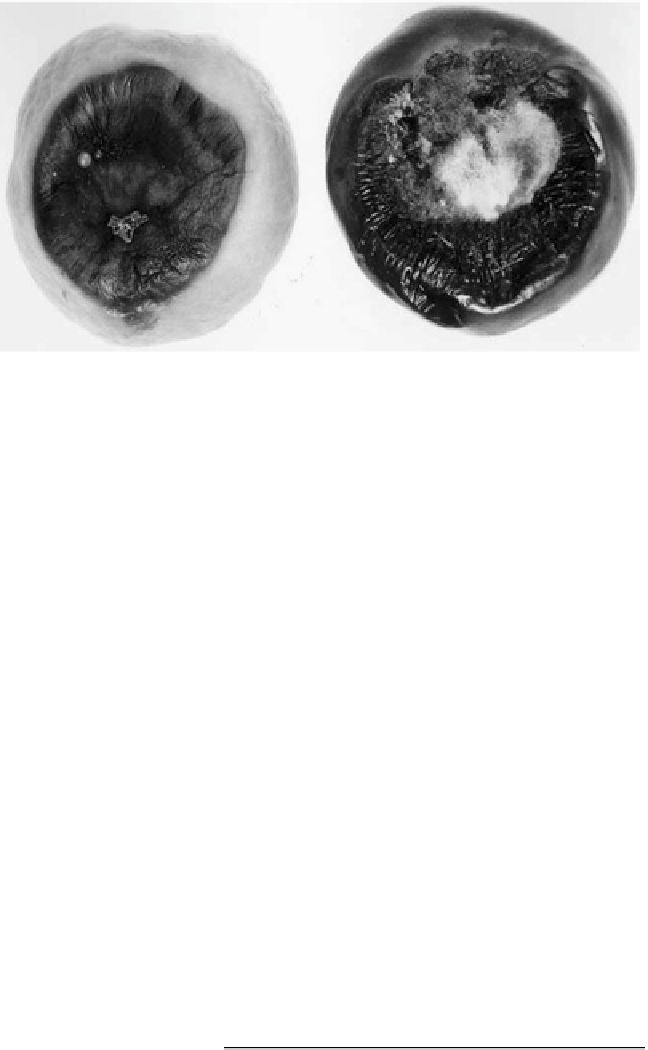Biology Reference
In-Depth Information
Fig. 1
Blossom-End Rot
on Tomato
of tree trunk, in a 1-foot band outside the drip of
the branches. Apply only once in 3 years, and
reduce the amount by half for peaches and other
stone fruits and for very sandy soils.
Beets, turnips, other root crops
. Black Heart,
Brown Heart. Roots have dark spots; plants are
gradually stunted and dwarfed; leaves are small,
variegated, twisted. The interior of the beet or
turnip has a dark brown to nearly black water-
soaked area, sometimes with a hollow center. The
amount of borax that can be added without injury
depends on type of soil and moisture content.
Celery
. Cracked Stem. Leaves have
a brownish mottling; stems are brittle, cracked
with brown stripes.
Lettuce
. There is malformation of young
leaves, death of growing point.
Ornamentals
. Terminal flower bud dies; top
leaves are thick and brittle. Application of boron
in fritted form has prevented splitting in carna-
tions, and has increased flower production in
greenhouse roses.
Bordeaux Injury
Both the copper and the lime in bordeaux mixture
can be injurious to some crops. Cucurbits are
stunted, and blossoming and fruit-setting are
delayed in tomatoes. Red-spotting of foliage of
roses and apples is followed by yellowing and
defoliation. See
Copper Spray Injury; Lime-
▶
Induced Chlorosis.
Boron Deficiency
A small quantity of boron is required for normal
growth of most plants. For some there is not much
leeway between necessary and toxic amounts;
other plants require or tolerate large amounts.
Deficiency symptoms vary with the crop.
Fruit trees
. Internal and external cork of
apples, dieback, rosette; dieback, blossom blight
of pear; stunting, excessive branches, internal
necrosis of peaches. Apple leaves on terminal
shoots turn yellow, are convex with red veins;
twigs die back from tip; dwarfed, thickened, brit-
tle leaves are in tufts at nodes; internodes are
abnormally shortened. Fruit has dry corky lesions
throughout the flesh or diffuse brown lesions and
bitter taste. McIntosh, Baldwin, Rome, North-
western Greening, and Jonathan exhibit external
cork with severe russeting of surface. Control by
applying borax, 1 ounce per each inch of diameter
Boron Toxicity
Retardation or prevention of germination, death
or stunting of plants, bleaching or yellowing of
tops, disappearance of color along midrib and
veins, all are indications of excess boron. Beans
are extremely sensitive to boron, with injury from
as little as 4 pounds borax broadcast per acre.




